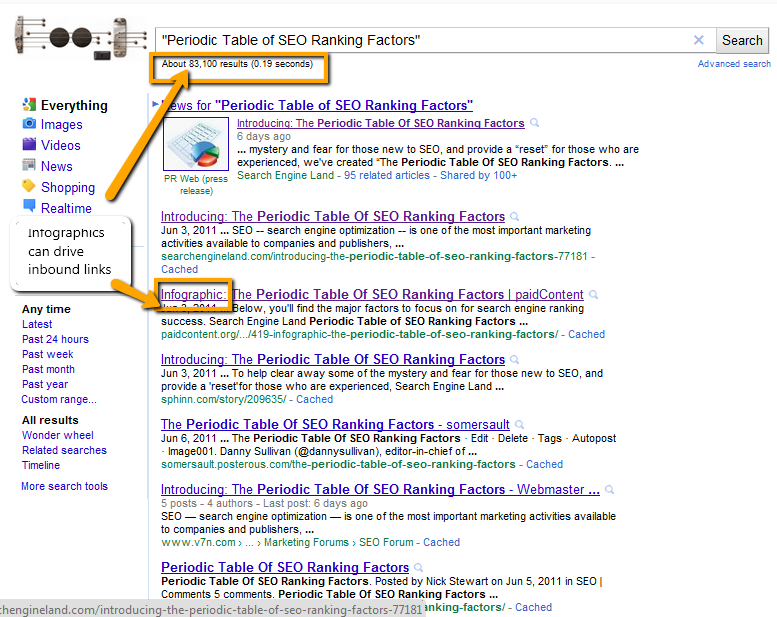At SMX Advanced, experts weighed in on sustainable ways marketers can increase their inbound links, and one conclusion was that infographics aren’t dead. Because infographics can sometimes seem “scheme-y,” experts reminded marketers of the value of high-quality content and useful information diagrams in driving inbound links.
Justin Briggs of Distilled shared a case study of an infographic he created. He focused on using relevant industry information, and the link was featured on Mashable. This led to more inbound links and hundreds of Likes on Facebook, adding a lot of link juice and exposure for the brand.
Session moderator Elisabeth Osmeloski, managing editor of Search Engine Land, reminded attendees that the best way to ensure their infographics achieve desirable link results is to offer value through exceptional content. For instance, SEL’s recent Periodic Table of SEO Ranking Factors was created from an editorial perspective, and the insight offered in the diagram has driven its success. At press time, a search for the table, which was published last Friday, produces more than 83,000 results. (That’s a lot of inbound links.) 
Briggs suggested marketers might increase the value of infographics (and the likelihood of generating inbound links) by accompanying the diagrams with blog posts, and offering to write original, brief guest posts with added insight for willing publishers. He says he uses the tool FollowerWonk to find social users who may be interested in his infographics and other content, and shares info with them accordingly.
The takeaway for marketers should be that infographics can be useful linkbait when they’re rooted in quality content. Moreover, valuable content – in any form – is key to SEO. This was one of the main talking points at SMX Advanced, and – as Brafton has reported – both Google’s Matt Cutts and Bing’s Duane Forrester reminded marketers in attendance that arming their sites with useful content is a core strategy for search success.



